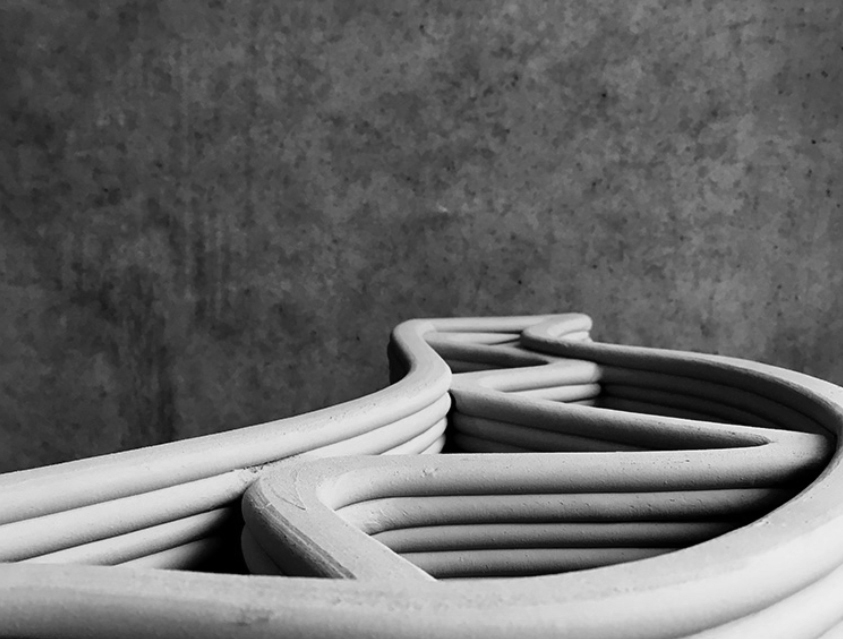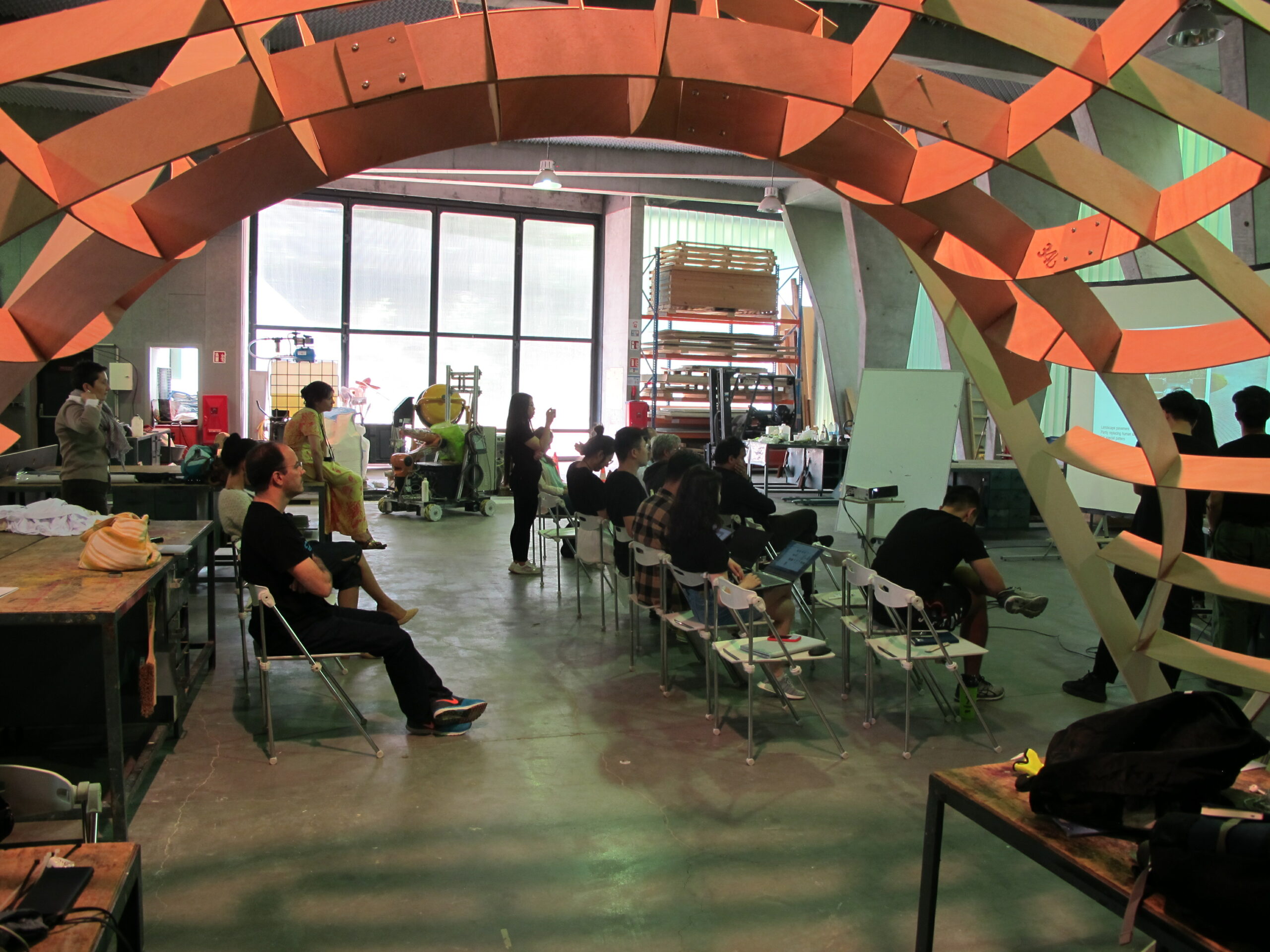1. N. Roussel, M. R. Geiker, F. Dufour, L. N. Thrane, and P. Szabo. Computational Modeling of Concrete Flow: General Overview. Cement and Concrete Research, vol. 37, no. 9, pp. 1298–1307, 2007.
2. A. Perrot, T. Lecompte, H. Kheli, C. Brumaud, J. Hot, and N. Roussel. Cement and Concrete Research Yield stress and Bleeding of Fresh Cement Pastes. vol. 42, pp. 937–944, 2012.
3. N. Khalil, G. Aouad, K. El Cheikh, and S. Rémond. Use of calcium sulfoaluminate cements for setting control of 3D-printing mortars. Construction and Building Materials, vol. 157, pp. 382–391, Dec. 2017.
4. K. El Cheikh, S. Rémond, N. Khalil, and G. Aouad. Numerical and Experimental Studies of Aggregate Blocking in Mortar Extrusion. Construction and Building Materials, vol. 145, pp. 452–463, 2017.
5. D. Lootens, P. Jousset, L. Martinie, N. Roussel, and R. J. Flatt. Cement and Concrete Research Yield Stress During Setting of Cement Pastes from Penetration Tests. Cement and Concrete Research, vol. 39, no. 5, pp. 401–408, 2009.
6. N. Roussel. Correlation Between Yield Stress and Slump?: Comparison Between Numerical Simulations and Concrete Rheometers Results. pp. 501–509, 2006.
7. D. Marchon, S. Kawashima, H. Bessaies-bey, S. Mantellato, and S. Ng. Cement and Concrete Research Hydration and Rheology Control of Concrete for Digital Fabrication?: Potential Admixtures and Cement Chemistry. Cement and Concrete Research, vol. 112, no. May, pp. 96–110, 2018.
8. R. J. M. Wolfs, F. P. Bos, and T. A. M. Salet. Cement and Concrete Research Early Age Mechanical Behaviour of 3D Printed Concrete?: Numerical Modelling and Experimental Testing. Cement and Concrete Research, vol. 106, no. February, pp. 103–116, 2018.
9. T. Wangler, E. Lloret, L. Reiter, N. Hack, F. Gramazio, and M. Kohler. Digital Concrete?: Opportunities and Challenges. pp. 67–75, 2016.
10. R. A. Buswell, W. R. L. De Silva, S. Z. Jones, and J. Dirrenberger. Cement and Concrete Research 3D Printing Using Concrete Extrusion?: A Roadmap for Research. Cement and Concrete Research, vol. 112, no. May, pp. 37–49, 2018.
11. N. Roussel. Cement and Concrete Research Rheological Requirements for Printable Concretes. Cement and Concrete Research, vol. 112, no. May, pp. 76–85, 2018.
12. L. Reiter, T. Wangler, N. Roussel, and R. J. Flatt. Cement and Concrete Research, The Role of Early Age Structural Build-Up in Digital Fabrication with Concrete. Cement and Concrete Research, vol. 112, no. May, pp. 86–95, 2018.
13. T. Lecompte, A. Perrot, V. Picandet, and H. Bellegou. Cement and Concrete Research Cement-Based Mixes?: Shearing Properties and Pore Pressure, vol. 42, pp. 139–147, 2012.
14. I. Hager, A. Golonka, R. Putanowicz. 3D Printing of Buildings and Building Components as the Future of Sustainable Construction?. Procedia Engineering, 151, 292–299, 2016.
15. T. Le, J. Webster, R. Buswell, S. Austin, A. Gibb, T. Thorpe. Fabricating Construction Components Using Layered Manufacturing Technology. Glob. Innov. Constr. Conf., Loughborough University, pp. 13–16, 2009
16. Z. Malaeb, H. Hachem, A. Tourbah, T. Maalouf, N. El Zarwi, F. Hamzeh. 3D Concrete Printing: Machine and Mix Design 3D Concrete Printing: Machine and Mix Design, no. October 2016, 2015.
17. T.T. Le, S.A. Austin, S. Lim, R.A. Buswell, A. G. F. GibbT., and T. Thorpe. Mix Design and Fresh Properties for High-Performance Printing Concrete. Materials and Structures. 45 (8) (2012) 1221–1232.
18. P. Wu, J. Wang, X. Wang. A Critical Review of the Use of 3D Printing in the Construction Industry. Automation in Construction, 68, 21–31, 2016.
19. A. Perrot, C. Lanos, Y. Mélinge, P. Estellé. Mortar Physical Properties Evolution in Extrusion Flow. Rheol. Acta 46, 1065–1073, 2007.
20. H. Lipson, M. Kurman. Fabricated: The New World of 3D Printing, John Wiley & Sons. 2013.
21. Print me a Stradivarius: How a New Manufacturing Technology Will Change the World. The Economist, Print Edition. Feb 12th 2011.
22. M. Jolin, D. Burns, B. Bissonnette, F. Gagnon, L.S. Bolduc. Understanding the Pumpability of Concrete, in: Proceedings Shotcrete for Underground Support XI, Engineering Conferences International, 2009.
23. V.H. Nguyen, S. Rémond, J.L. Gallias. Influence of Cement Grouts Composition on the Rheological Behavior. Cement and Concrete Research, 41, 292–300, 2011.
24. B. Panda, S. C. Paul, L. J. Hui, Y. W. D. Tay, M. J. Tan. Additive Manufacturing of Geopolymer for Sustainable Built Environment. Journal of Cleaner Production 167, 281-288, 2017.
25. B. Panda, M. J. Tan. Material Properties of 3D Printable High-Volume Slag Cement. 1st International Conference on 3D Printing (3DcP), 2018.
26. B. Panda, M. J. Tan. Experimental Study on Mix Proportion and Fresh Properties of Fly Ash Based Geopolymer for 3D Concrete Printing. Ceramics International 44, 10258-10265, 2018..

